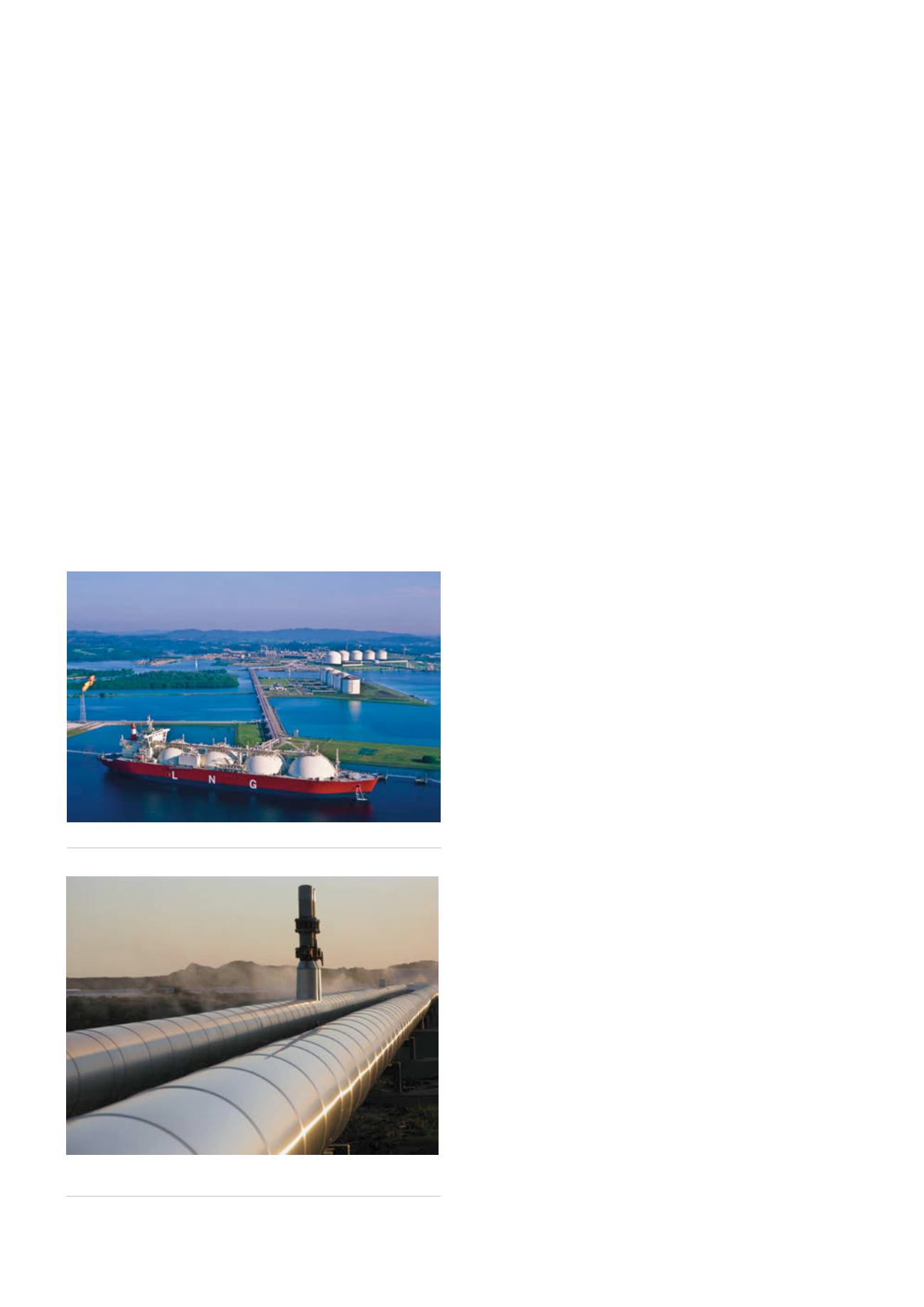
characteristics of natural gas. The EPA summarised them in Clean
Alternative Fuels: Liquefied Natural Gas.
Fleets using LNG:
)
Produce half the particulate matter of average diesel vehicles.
)
Significantly reduce carbon monoxide emissions.
)
Reduce nitrogen oxide and volatile organic hydrocarbon
emissions by 50% or more.
)
Potentially reduce carbon dioxide emissions 25% depending
on the source of the natural gas.
)
Drastically reduce toxic and carcinogenic pollutants.
)
Increase methane emissions (not a benefit).
Is it really clean?
Despite the fact that natural gas burns cleaner than many other
fuels, the pipelines that carry it from extraction to distribution
unfortunately also carry what is known as ‘black powder
contamination.’
Very abrasive and suspended in the gas, black powder will
erode pipeline walls while damaging compression components,
valves and meters.
When the contaminated gas enters gas plants, LNG plants
and infrastructure used by end users to supply CNG or produce
power, it causes damage to every component it contacts.
As soon as a pipeline begins to transport gas or hydrocarbon
fluid, there will be some moisture in the flow. With minor changes
in atmospheric temperature or pressure, water vapour condenses
on the inside of the pipe and more black powder is formed. That
is all it takes to begin the damaging cycle.
Black powder is a hazardous, ferrous (iron-based) substance
that looks like black sand. It is created when condensation triggers
the production of iron sulfides and iron oxides from the carbon
steel pipe walls. It builds up in bends and curves during low flow
and can then suddenly come down the pipe in large volumes
during high production times.
Dew point monitoring is employed to predict condensation
in specific pipeline locations at certain times. Essentially, it is
weather monitoring. Based on moisture forecasts, preventative
measures can be taken to minimise black powder, but this is never
enough to eliminate it outright.
Once the contamination process begins, it is very difficult to
stop it. As a result product is degraded and production values
are reduced from premature pump failures, turbine/compressor
component wear and tear, premature wear of transmission lines,
plugging of meters and traditional filters and seizing of valves.
Black powder, as it flows down gas pipelines, damages
compressors, orifice meters, instrumentation, control valves,
turbines and other essential components. As an example of
the replacement cost associated with damage caused by black
powder, a dry seal failure can run in excess of US$80 000 per seal,
plus the associated downtime.
Traditional methods of removing black powder
Chemical flushing and pigging are used to remove black powder.
These are very expensive methods. Traditional depth media
filtration is also employed on gas pipelines and is costly to
operate and only efficient down to 3
µ
m in size. It is important
to note the majority of black powder is less than 1
µ
m in dry gas
lines. Separators and cyclones are also employed with efficiencies
down to 8
µ
m in size.
Ongoing attempts to deal with black powder in gas pipelines
using traditional depth media filtration have had no lasting
success. Although this filtration is in place on many pipelines, it is
inefficient. The black powder will continue to do its damage, as it
is too fine to be trapped. Traditional filters easily become clogged
and go into ‘bypass’ mode, allowing the flow of contaminated gas
or liquid to resume.
Black powder particles can be as large as 100+
µ
m. In wet gas,
though, the majority are 10
µ
m or less. In dry gas, black powder
particles are typically 3
µ
m to sub-micron in size. As a result, black
powder in gas transmission lines and processing systems cannot
be trapped by traditional depth media filtration, which captures
particles that are 8
µ
m in size or larger.
These ‘old school’ filters get clogged easily and then restrict
flow, slowing down the movement of liquid and gas product,
negatively impacting transmission and overall operations. When
flow is impeded, additional horsepower is typically brought in to
increase velocity, but this approach adds unnecessary cost while
stressing systems that must work harder to move product through
clogged networks.
Figure 1.
LNG is marketed globally as a clean, alternative fuel.
Figure 2.
Every pipeline risks black powder contamination from
startup.
128
World Pipelines
/
AUGUST 2015


